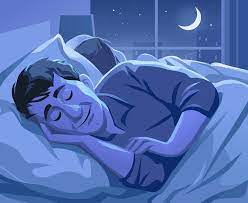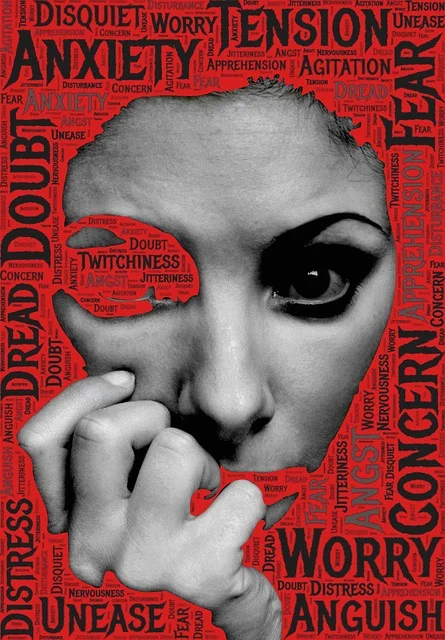Introduction – The Mystery and Power of REM Sleep
Every night, as you drift into dreams, your body enters one of the most fascinating biological states — REM sleep (Rapid Eye Movement sleep). It’s the stage when your eyes dart beneath closed lids, your brain becomes highly active, and vivid dreams unfold.

Far from being just a quirky phase of rest, REM sleep plays a vital role in emotional balance, learning, creativity, and mental health. It’s the time when the brain consolidates memories, processes emotions, and repairs neural pathways — essential work that keeps you functioning at your best.
In this article, we’ll explore what REM sleep is, its key characteristics, why it’s important, and how to improve it for better brain and body health.
What Is Rapid Eye Movement (REM) Sleep?
REM sleep is one of the four stages of the human sleep cycle, distinguished by quick, random eye movements, vivid dreaming, increased brain activity, and temporary muscle paralysis.
It typically occurs about 90 minutes after you fall asleep and repeats several times throughout the night, with each cycle lasting longer as morning approaches.
During REM sleep, the brain becomes almost as active as when you’re awake. The body, however, remains mostly motionless, thanks to a natural mechanism that prevents you from physically acting out dreams.
This paradox — a highly active brain inside a resting body — is why REM sleep is sometimes called “paradoxical sleep.”
The Discovery and Science Behind REM Sleep
REM sleep was first discovered in 1953 by researchers Eugene Aserinsky and Nathaniel Kleitman at the University of Chicago. They noticed rapid eye movements in sleeping subjects and linked these movements to periods of vivid dreaming.
Their findings revolutionized sleep science, showing that sleep isn’t a passive state but a complex biological process involving distinct stages, each with specific functions.
Modern neuroscience now confirms that REM sleep is critical for memory consolidation, emotional regulation, and brain development. Advanced brain imaging shows high activity in the limbic system (emotion center) and visual cortex during REM, explaining why dreams are often intense and emotional.
What Is the Characteristic Feature of Rapid Eye Movement (REM) Sleep?
The defining features of REM sleep include:
- Rapid Eye Movements:
Eyes move quickly in random directions under closed lids — hence the name. - Vivid Dreaming:
REM is the stage where most dreams occur, often rich in emotion and story-like structure. - Muscle Atonia (Paralysis):
The body’s muscles become temporarily paralyzed (except for breathing and eye muscles) to prevent movement during dreams. - Irregular Heart Rate and Breathing:
Both become variable, similar to wakefulness. - Brain Activity Resembling Wakefulness:
EEG scans show fast, desynchronized waves — the brain appears “awake” though the body is asleep.
These features make REM sleep a unique and essential component of mental and physical restoration.
Stages of Sleep: Where REM Fits In
Sleep isn’t one continuous state — it cycles through four main stages, divided into NREM (non-REM) and REM phases.
- NREM Stage 1: Light sleep; transition between wakefulness and rest.
- NREM Stage 2: Deeper relaxation, slowed heart rate, and reduced temperature.
- NREM Stage 3 (Deep Sleep): Also called slow-wave sleep, this is the most restorative stage for physical healing and immune function.
- REM Sleep: The final stage marked by dreaming and intense brain activity.
A full cycle lasts about 90–120 minutes, and adults typically experience 4–6 REM cycles per night. As the night progresses, REM periods lengthen — the final one may last up to an hour before you wake.
What Is REM Sleep and Why Is It Important?
REM sleep is essential for mental, emotional, and physical health. It’s when the brain organizes experiences, regulates mood, and prepares you for the next day.
Here’s why it’s so important:
- 🧠 Memory Consolidation:
REM sleep strengthens neural connections that form long-term memories. It helps integrate information from the day into existing knowledge. - 💭 Emotional Processing:
The brain replays emotional experiences in dreams, helping you process stress and trauma safely. - 🎨 Creativity and Problem-Solving:
REM sleep enhances creative thinking and insight — many inventors and artists credit dreams for breakthroughs. - 🧬 Brain Development:
In infants and children, REM dominates sleep time, fueling rapid brain growth and neural wiring. - ⚖️ Emotional Stability:
Regular REM cycles maintain balanced mood and resilience against anxiety and depression.
Without adequate REM sleep, the brain struggles to think clearly, regulate emotions, and learn effectively.
What Are the Three Characteristics of REM Sleep?
The three primary characteristics of REM sleep are:
- Vivid Dreaming:
Dreams during REM are detailed, emotional, and story-like, often involving intense imagery and sensations. - Rapid Eye Movement:
The signature feature of this phase — eyes move as if tracking visual scenes in dreams. - Muscle Paralysis (Atonia):
The body’s voluntary muscles are immobilized, keeping you from enacting dreams physically.
Together, these features distinguish REM sleep as both mentally active and physically still, a delicate balance that allows the brain to rejuvenate safely.
The Role of REM Sleep in Dreaming and Mental Health
REM sleep is where dreams are born — complex narratives combining memories, emotions, and imagination.
Neuroscientists believe dreaming helps regulate mood, rehearse problem-solving, and even boost empathy.
From a psychological perspective, REM acts as the brain’s emotional therapist, replaying and neutralizing difficult feelings from waking life.
Lack of REM sleep has been linked to:
- Higher anxiety and irritability
- Increased risk of depression
- Difficulty handling stress
- Impaired emotional memory
In short, healthy REM equals emotional balance — an essential ingredient in mental well-being.
How Much REM Sleep Do You Need?
On average, adults spend about 20–25% of total sleep time in REM — roughly 90–120 minutes per night.
Here’s a breakdown by age:
| Age Group | % of Sleep in REM | Average Duration |
|---|---|---|
| Infants | 50% | 8 hours |
| Teens | 25% | 2 hours |
| Adults | 20–25% | 1.5–2 hours |
| Seniors | 15–20% | 1 hour or less |
As you age, total REM time decreases, but its importance remains constant. Maintaining good sleep hygiene ensures adequate REM even as sleep patterns evolve.
What Happens When You Don’t Get Enough REM Sleep?
REM deprivation can seriously affect mental and physical performance.
Short-term effects include:
- Memory lapses
- Mood swings
- Poor concentration
- Reduced creativity
Long-term consequences may involve:
- Emotional instability
- Weakened immune system
- Increased risk of depression and anxiety
- Cognitive decline
When deprived, the body performs a REM rebound — spending longer in REM the next time you sleep to restore balance.
This shows how essential REM is — your body fights to regain it.
Factors Affecting REM Sleep
Several factors influence REM quality and duration:
- Stress and Anxiety: Overactive stress hormones disrupt REM cycles.
- Caffeine and Alcohol: Both can suppress or delay REM.
- Medications: Some antidepressants and sedatives alter REM patterns.
- Sleep Disorders: Conditions like sleep apnea fragment REM cycles.
- Irregular Sleep Schedules: Shift work and jet lag confuse the body’s circadian rhythm.
- Age and Hormones: Natural changes reduce REM percentage over time.
Understanding these factors can help you protect and optimize your sleep quality.
How to Improve REM Sleep Naturally
To boost REM sleep and overall rest quality, try these evidence-based habits:
- Stick to a Consistent Sleep Schedule
Go to bed and wake up at the same time daily to stabilize circadian rhythms. - Create a Relaxing Bedtime Routine
Practice deep breathing, light stretching, or mindfulness meditation to calm the mind. - Limit Caffeine and Alcohol
Avoid caffeine after noon and minimize alcohol before bedtime. - Keep Your Sleep Environment Cool and Dark
Ideal temperature: around 18–20°C (65–68°F). Use blackout curtains and white noise if needed. - Avoid Screens Before Bed
Blue light interferes with melatonin production, delaying REM onset. - Exercise Regularly
Daily movement improves sleep depth and REM balance — just avoid intense workouts close to bedtime. - Manage Stress
Journaling, gratitude practice, or mindfulness can help clear mental clutter before sleep.
These steps promote smoother transitions into REM cycles and more restorative rest overall.
REM Sleep Across the Lifespan
REM sleep evolves as we age:
- Infants: Spend about half their sleep in REM — vital for neural development.
- Children and Teens: REM supports learning and emotional regulation.
- Adults: Stabilizes around 20–25% of total sleep, maintaining cognitive function.
- Elderly: REM time declines slightly, often due to medications or fragmented sleep.
Even as duration decreases, quality remains critical — seniors who preserve healthy REM patterns enjoy better memory and mood regulation.
REM Sleep and Neurological Disorders
Abnormalities in REM are linked to several brain-related conditions:
- REM Sleep Behavior Disorder (RBD): The paralysis mechanism fails, causing people to act out dreams physically.
- Narcolepsy: Characterized by sudden REM intrusions during wakefulness.
- Parkinson’s Disease & Dementia: Often associated with disturbed REM patterns long before other symptoms appear.
Monitoring REM quality can help detect or manage such conditions early.
REM vs. NREM Sleep: Key Differences
| Feature | REM Sleep | NREM Sleep |
|---|---|---|
| Brain Activity | High, active | Slow, synchronized |
| Dreams | Vivid, emotional | Rare or fragmented |
| Muscle Tone | Paralysis | Relaxed but movable |
| Heart Rate/Breathing | Irregular | Steady and slow |
| Function | Memory, emotion, creativity | Physical recovery, growth |
Both REM and NREM are essential — NREM repairs the body, while REM restores the mind.
The Future of REM Sleep Research
Scientists continue exploring REM’s deeper mysteries. Current studies investigate how REM impacts:
- Emotional intelligence
- Trauma recovery
- Learning efficiency
- Neuroplasticity
Emerging technologies like AI-based sleep trackers and EEG headbands allow real-time analysis of REM patterns, offering personalized insights into sleep health.
Future breakthroughs may even use REM modulation for mental health treatment or neurorehabilitation.
Conclusion – The Power of REM Sleep for Mind and Body
REM sleep is more than a dream factory — it’s the brain’s nightly therapy session, memory workshop, and emotional regulator.
When you protect your REM cycles through good habits and balanced routines, you enhance your creativity, emotional strength, and overall mental clarity.
In a world where rest is often undervalued, understanding REM sleep reminds us that quality sleep is not a luxury — it’s a biological necessity for a healthy mind and body.



